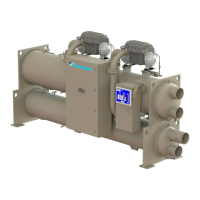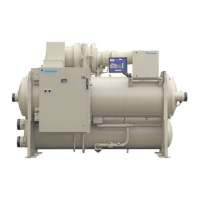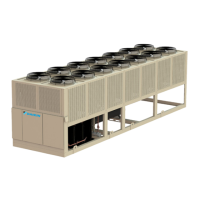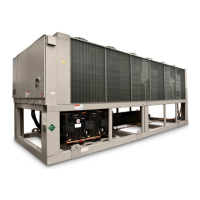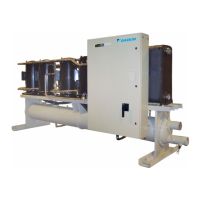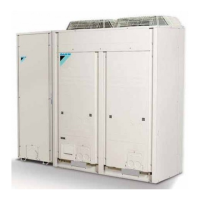19
IOM 1264-4
WWW.DAIKINAPPLIED.COM
TEMPLIfIER
Flow Switch
A water ow switch must be mounted in the evaporator and
condenser leaving water lines to prove adequate water ow to
the vessels before the unit can start. This will safeguard against
slugging the compressors on startup. It also serves to shut down
the unit in the event that water ow is interrupted to guard against
evaporator freeze-up.
NOTICE
Install per the vendor instructions and calibrate to a safe setting
based on the application design ow.
Groove Coupling / Flow Switch Warning
All evaporators and condensers have OGS-type grooved water
connections (adhering to Standard AWWA C606) or optional
ange connections. The installing contractor must provide
matching mechanical connections. PVC piping should not be
used.
On units utilizing shell-and-tube evaporator vessels and factory-
mounted ow switches and ange connections (groove-to-ange
adaptors or weld-on anges), relocating the ow switch is
required to allow for possible future replacement. The ange will
interfere with unscrewing the switch. The following procedure is
recommended before installing a ange to avoid interference:
1. Remove the ow switch and plug the opening in the
nozzle.
2. Install the groove-to-ange adaptor or weld on ange.
3. Relocate the ow switch in the water piping outside the
ange close enough to it that the wire leads will reach
and the switch can still be unscrewed.
Glycol Solutions
The use of glycol in Templier systems is uncommon, but if used,
the system performance will result in lower refrigerant suction
pressure, cooling performance less, and water side pressure
drop will be higher.
Daikin Applied encourages a minimum glycol concentration of
25% be provided on all glycol applications. Glycol concentrations
below 25% have too little inhibitor content for long-term corrosion
protection of ferrous metals.
NOTICE
The eect of glycol in the condenser is negligible and there is no
capacity derate.
CAUTION
Do not use automotive grade antifreeze. Industrial grade glycols
must be used. Automotive antifreeze contains inhibitors which
will cause plating on the copper within the unit evaporator. The
type and handling of glycol used must be consistent with local
codes.
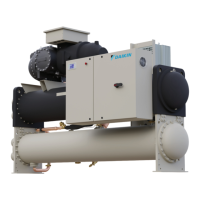
